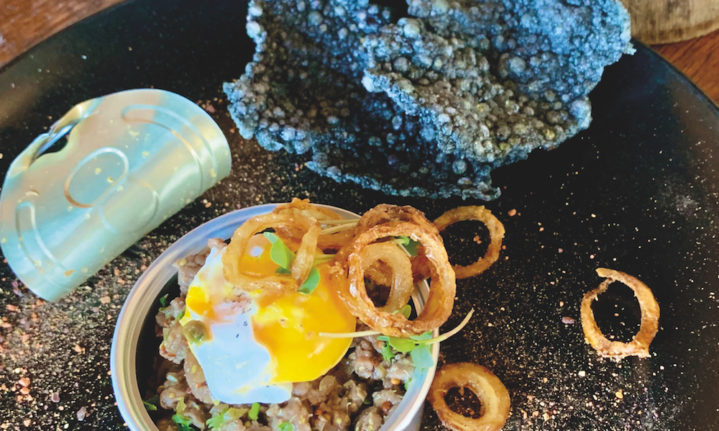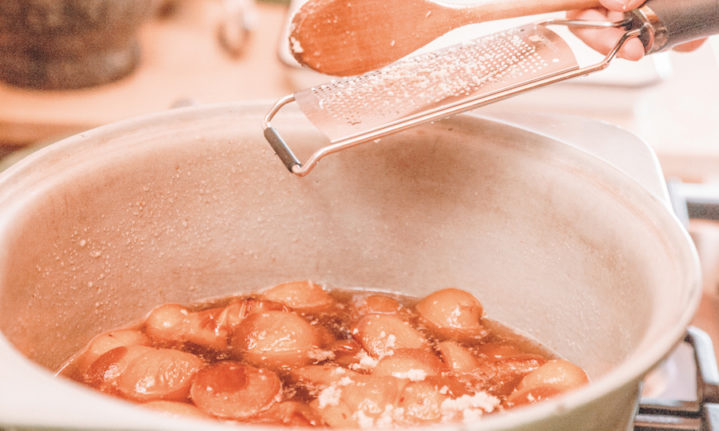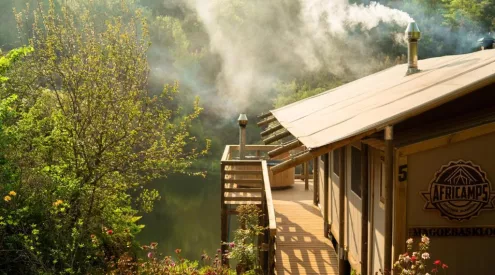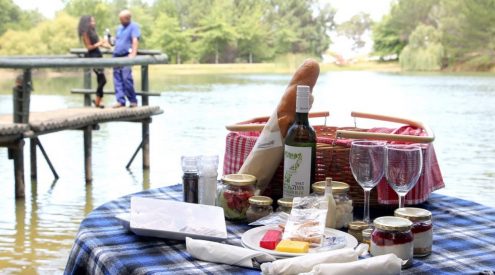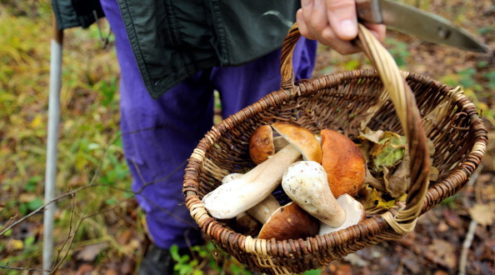By Louzel Lombard Steyn
An uncanny canning renaissance is taking place, with hip bistros and bougie hipsters all dabbling in this seasonal culinary art that boasts sustainability at its core. This retro food preservation trend is no longer just an “Old Tannie” hobby, writes Louzel Lombard Steyn
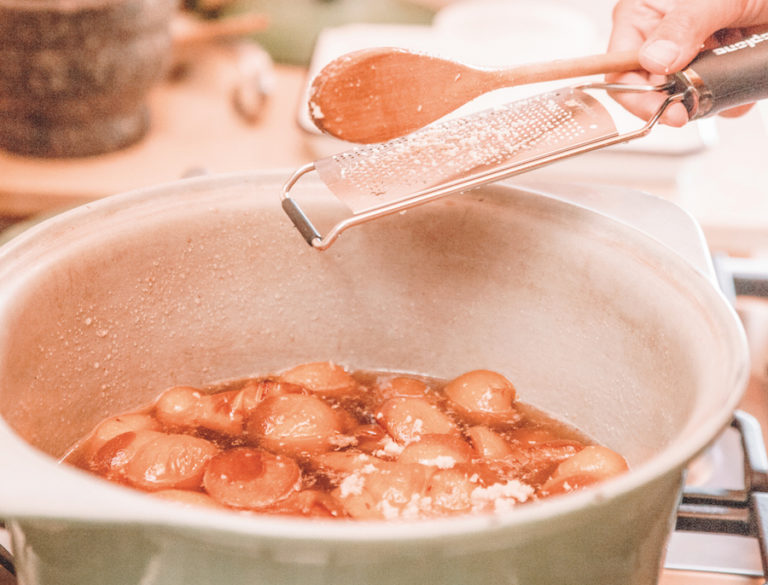
Cooking Jam.
My Oupa Toy is a low-key green fig bottler extraordinaire. Ouma does the cooking and recipe stuff, but every year towards the end of October, it’s Oupa’s hands that are scalded by the fig trees’ sap. He’s the picker. As well as the patient sous chef who sands down each individual fig’s skin and presses a tiny cross on the bottom-end of the fruit with a sharp knife. ‘So the syrup can soak up through the entire fig,’ he’’ll tell you.
It’s a sight to behold: my Oupa Toy in his La-Z-Boy watching the rugby with a mountain of figs to one side, and a bowl of blouvitterjoel-spiked water to the other. The prepped figs are doused in this mixture, to keep their bright green colour intact when bottled. Oupa has many stories to tell about the blue vitriol, aka copper sulphate, which he says was given to young lads in the army to suppress certain, err, natural desires. I don’t know if this is true, but it definitely works for the figs. Oupa also says you can only harvest green figs until 17 October. No later, otherwise, catastrophe; the fruits become hollow inside and the risk of fermentation after bottling is just too high.
Catastrophe is something that often plagues preservers. In olden times, this didn’t bode well for survival. One batch of botched bottled cabbage is still okay (kimchi, anyone?) but if life still depended on preserving food, my family would be long dead. Luckily, we’ve learnt to beg, borrow and steal, mainly from Ouma and Oupa. For the rest of the family – some have better luck than others.
One aunt will tell you straight that she won’t cook jam because it always turns out a sticky, dark mess resembling hot tar. Even if the jam cooks well, the colour and texture transform as soon as it’s bottled. “Tyre jam” Oupa calls it.
My other aunt has the gift, but it took some practice. She and my mom once wrecked a 1970s linoleum kitchen table trying to bottle a batch of halved peaches. The stainless-steel legs gave way under their force when pressing down to screw on the lid. They were determined to get it right though. As Tannie Celest pressed down on the jar, mom grabbed hold of the kitchen table and pulled it upwards until the peaches were secure. Catastrophe? Averted. Despite both of them bursting out in hysterical laughter mid-way. ‘We canned ourselves,’’ mom likes to say. Indeed.
Canning is one of the world’s newest food preservation methods, pioneered in the 1790s when French confectioner Nicolas Appert observed that food in sealed glass bottles, with some heat applied, didn’t spoil. In the early 1800s, his principles were successfully trialled by the French Navy on a wide range of foods including meat, vegetables, fruit and milk. ‘If it works for wine, why not food,’ he concluded in his French accent, and sent the sailors on their merry way. Luckily for them, the canned foods held… because it was later found that old Nic’s theories weren’t spot on.
It was not until 1862 when Louis Pasteur discovered the relationship between micro-organisms, food spoilage and illness that the process was better understood, and coined. Pasteurisation, people. Canning on steroids. It’s not necessarily the absence of oxygen, but rather the workings of micro-organisms within the foods and their reactions to oxygen, that cause spoilage.
It’s all a little sciency, I know. But the bottom line is simple, really: pick your figs before 17 October each year and always, always, listen to your grandpa. Otherwise, rely on these professional preservers for your canned food fix.
Peach power

Isabel’s Canned Peaches
The story of how Sonnie and Isabel Basson’s fruit preserving business came to life is one of hardship and perseverance. After losing their farm, this Laingsburg family had their backs against the wall. So Isabel did what many struggling farmers’ wives before her had done in tough times: she worked with the resources available to generate extra income.
Over the past 10 years, Isabel’s fruit preserving business has taken off and she now supplies shops across South Africa with her beautiful, nostalgic fruit preserves.
The halved Karoo peaches are the flagship product and still one of the favourites.
Contact: 083 230 3199
WHERE: All produce is preserved on Rietvlei Farm, outside Laingsburg, Western Cape. You can find Isabel products in the best farm stalls across South Africa, including at the Ou Meul Bakkery franchise.
Canned beef
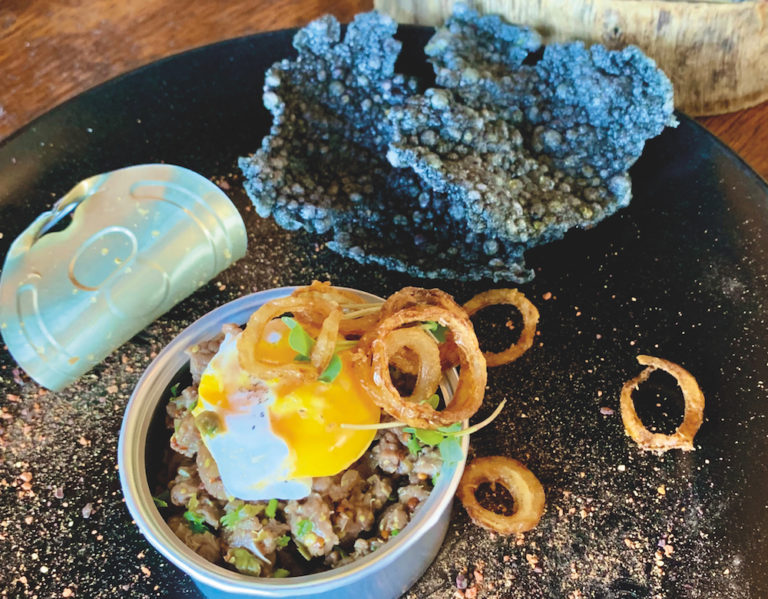
Canned beef tartare from Muse Restaurant in Gqeberha.
No, we’re not talking about bully beef! Muse Restaurant in Gqeberha has turned beef tartare on its head by serving it in a can – and it may be the best canned beef you’ll ever eat. Fear not, the entire dish is made fresh on the spot, but chef Allan Bezuidenhout adds a playful, DIY element by serving it sealed. Magic!
It’s made with only the best South African beef fillet that is seasoned to perfection and served with poached egg yolk, crispy onions and charcoal tapioca crisps.
Contact: 041 582 1937
WHERE: 1B Stanley Street, Richmond Hill, Gqeberha, Eastern Cape
Wickedly good

Wickedfood Earth Farm.
Learn how to preserve your own fruits at one of the Wickedfood Earth Country Cooking School’s preserving workshops. Set in the magical Magaliesberg Mountains, guests can stay on the farm during the workshop. The farm food garden and orchard boasts more than 50 varieties of fruit and nut trees, and berries, from where you’ll harvest your bounty, before checking into the kitchen to learn the art of preservation.
The class teaches a selection of six preserves, jams, chutneys, relishes, sauces, vinegar and bottled fruit and you can take home some of the produce from the classes.
The Wickedfood Earth Farm food garden is internationally recognised by Slow Food as an important educational garden.
Contact: 076 236 2345
WHERE: Wickedfood Earth Farm, Hekpoort, Magaliesberg, North West
Pickled tequila

Bottled agave buds from Tim Murray in Graaff Reinet.
Agave isn’t only good for tequila, although it’s very good for tequila. It’s also good for making agave bud pickles. Graaff-Reinet farmer Tim Murray is South Africa’s own agave master and he loves making all sorts of edibles from his vast agave plantations.
‘We started experimenting with the agave buds because there were so many of them,’ Tim says. ‘They’re amazing when fried in butter – like asparagus, or deep-fried in a batter – we call these karoo prawns! However, the fresh flowers don’t last long. So my mom helped to develop a secret recipe to preserve them.’
The agave bud pickles are tangy and crunchy and are great to eat on a snack platter. Tim and his wife, Lisa, still pick, pickle and preserve every batch themselves, from their farm kitchen.
Contact: 082 632 3103
WHERE: The Murray’s Roode Bloem Farm outside Graaff-Reinet, and the agave pickles are available at select farm stalls across SA. Contact Tim to get yours.
Tlink Tlink
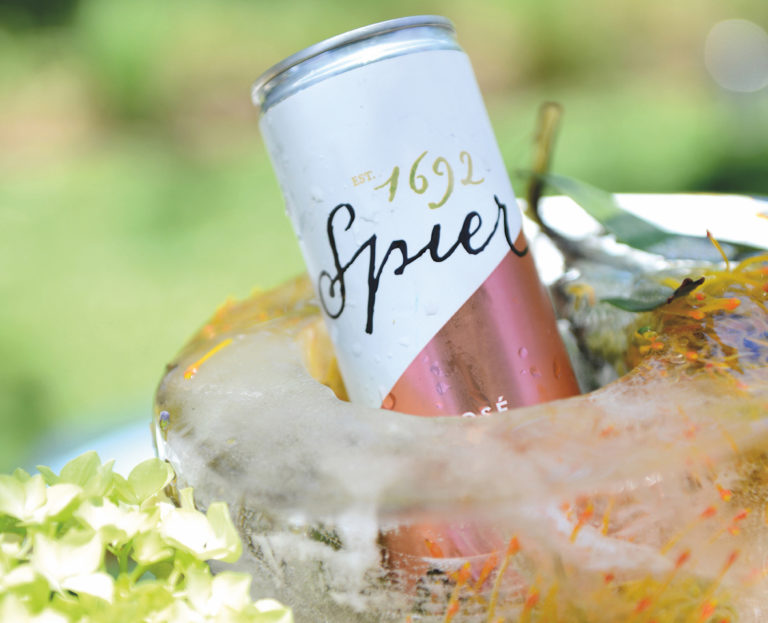
Canned wine, but classy.
Booze in tins is not a novelty in South Africa. We’ve been drinking umqombothi from 5L cans since long before Lion Lager. Now, the wine industry has caught on. Sparkling wine six-packs from JC Le Roux and tall tins of tasty rosé from Spier – to name a few – make mountain-top picnics fun again. Yes, yes, a good bottle of wine is still the business, but have you tried carrying that up a mountain on your back? And then drinking it warm? No thank you.
Cue cute tins of tipple that fit into a tiny icepack. Use them elsewhere, too; the tins always add a playful element to any occasion. ‘If it works for food, why not wine?’ I say, with apologies to old Nic from France.
WHERE: Buy yours online or in all good liquor shops in SA.
The original hipsters

A look inside Japan’s tinned food restaurant, Mr Kanso.
Although South Africa has always embraced preserved foods and fruits, the rest of the world is slowly catching up. Japan’s Mr Kanso, for example, stocks more than 300 different canned food varieties from around the world. There are all the favourites, such as sardines and tuna, as well as lots of interesting selections such as smoked liver, Spanish pork, Japanese curry, takoyaki and egg cakes. They also do canned food and alcohol pairings and tins have become cool collectables for travelling foodies.
In New York, again, a new haunt on Maiden Lane is all the rage, serving only the finest tinned seafood, fresh bakes and craft tinned liquor. ‘A tin of fish accompanied by a salad or piece of baguette makes for a complete meal,’ the Maiden Laners believe.
And here we are feeling all embarrassed about our Lucky Star and half-loaf month-end meals.
South Africans are the original hipsters, I tell you.
WHERE: Mr Kanso: 1 Chome-5-26 Minamihorie, Nishi Ward, Osaka, Japan
Maiden Lane: 162 Avenue B, New York, New York, USA
ALSO READ










